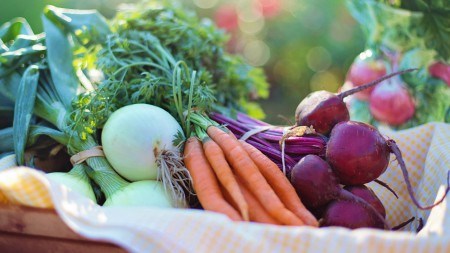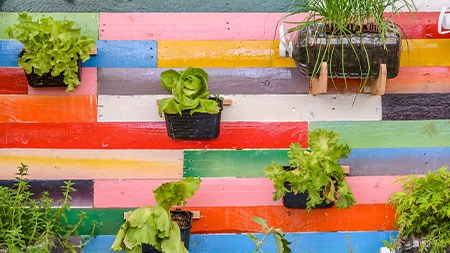Starting a vegetable garden is always a good idea, but a popular movement campaigns for us to move beyond just a simple patch in our back yard.
Grow Food, Not Lawns
A million-member strong Facebook community, matched with a resource-filled website, has made Grow Food, Not Lawns more than just a movement – it’s become a lifestyle for many homeowners across the globe. The thinking behind the movement focuses on repurposing suburban gardens for the production of fruits and vegetables. It’s more than just a little vegetable patch – it’s a permaculture movement that seeks to feed families, help you keep your grocery bills down, and teach the kids a thing or two about sustainable living.
Suburban Farming
Of course, converting your lush green lawn into a food garden may seem a little over-the-top at first, but there are big benefits attached to it. Not only will it help you cut down on grocery bills and shopping runs, it can increase your property value too. As consumer interest in eco-friendly living picks up, the addition of a fully functional food garden to your home could increase its selling price.
Family Food Garden
Teaching your children how to grow their own food is an important life lesson. Getting the kids involved in planting seeds, harvesting, and maintaining the garden is a great family-friendly activity. Moreover, you’ll be passing on excellent skills that are not commonly taught in school. And, for those parents with picky eaters out there, involving your children in planting vegetables may mean they’re a little more eager to enjoy those carrots and beans at dinner time.
Cutting back on your bills
Maintaining a lush green lawn can be difficult, especially during the dryer months of the year. Expensive irrigation systems, rising utility costs, and recent drought conditions, can make that idyllic space a money-pit you don’t want to hang on to. Converting your lawn space into a food garden won’t eliminate your need for ensuring your garden has good access to water, but it can make it a little easier to maintain. As seasonal planting and harvesting forms a key element for cultivating a food garden, you can also adjust the water supply for your garden, in accordance with what you’ve planted for the season.
Let’s get growing
Converting your lawn into a food garden needn’t be difficult. If you’re feeling a little unsure of your gardening skills, chat to your local nursery or gardening centre for advice. Set aside a weekend to start the process, and don’t think you have to undo all that green lawn just yet! Gardening experts have highlighted that a well-maintained lawn, that’s been cared for organically, makes the perfect, nutrient-rich base for a food garden. The grass, roots, and soil will make for a lovely bed, that you can up-end with a turf cutter and cover with compost. You can make your own compost too! Don’t forget – food gardens will need a lot of sunshine, so cut back trees and shrubs where required.
Intentional living
Once your food garden is up and running, you’ll soon reap the benefits of having easy access to fresh fruits, vegetables, and herbs. Tailoring your family’s meals around what’s ready for the picking in your garden will lead you towards creating healthier meals, with inspiration available right at your front door. We’re willing to bet you’ll spend more time outdoors as a family, tending to your food garden, than you did when it was just a lawn.




